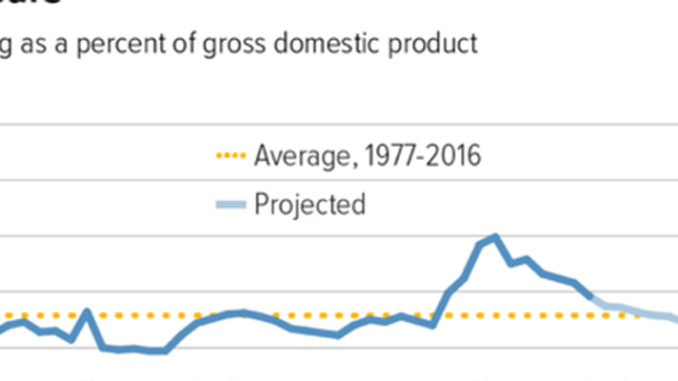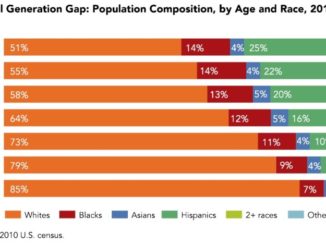
A key question about the President’s forthcoming 2019 budget is whether it, like last year’s budget, will call for deep cuts in basic assistance that help struggling families pay rent, put food on the table, and access health care.[1] While the President has talked frequently — particularly during his presidential campaign — about households that have been hard hit by economic trends in recent decades, his policy proposals have not reflected a concern for their well-being. The new tax law, which showers large benefits on the wealthy and corporations but offers relatively little for low- and moderate-income workers, is a case in point. So was his first budget, which included deep cuts that would have increased poverty and the number of Americans without health insurance.
Last year the Trump Administration justified sweeping cuts to low-income mandatory programs — programs funded outside the annual appropriations process — by pointing to future deficits. But these programs are not driving the nation’s long-term fiscal problem. That is, they are not the reason that the debt is projected to rise faster than the economy in future decades.[2]
Programs Outside Health Care Shrinking as Share of Economy
Mandatory programs for low- and moderate-income people provide basic assistance to struggling families. These programs — such as SNAP (formerly food stamps), Supplemental Security Income (which provides income assistance to poor seniors and people with disabilities), and Medicaid — keep millions of families out of poverty, reduce the depth of poverty for millions more, help tens of millions of people obtain health insurance, and improve the nutrition of families in need.
In recent years, the cost of these programs has shrunk significantly.Total spending for mandatory low-income programs outside health care is only modestly above its average over the past 40 years (1977-2016), measured as a share of gross domestic product (GDP). In recent years, the cost of these programs has shrunk significantly, in large part due to the economy’s recovery from the Great Recession. And spending on these programs is projected to fall as a share of GDP below the past 40-year average (see Figure 1).
Projected Decline in Non-Health Programs Largely Offsets Health Increases
To be sure, spending on Medicaid and other low-income mandatory health programs is above its 40-year average as a percent of GDP. This is due in large part to policymakers expanding Medicaid, creating the Children’s Health Insurance Program, and establishing subsidies so low- and moderate-income households can afford private coverage. These policy changes expanded access to health coverage for millions of Americans. Thus, it’s not surprising that the cost of health coverage for low- and moderate-income Americans is higher today than the average of the past four decades.
Going forward, the cost of low-income health programs is projected to continue rising as a percent of GDP. This is chiefly due to the aging of the population, which has made more seniors (who have higher health care costs) eligible for Medicaid, and to the longstanding rise in costs throughout the U.S. health care system, which partly reflects medical advances that improve health and save lives but also add to costs. Medicaid continues to cost far less per beneficiary than private health insurance, and its costs are rising more slowly, making Medicaid the health insurance system’s most economical and efficient part.
Spending on low-income health programs is estimated to grow from 2.5 percent of GDP in 2017 to 2.9 percent in 2027. But this will mostly be offset by the decline in other low-income mandatory programs. As a result, the total cost of low-income mandatory programs, including health programs, is projected to grow only modestly over the coming decade, from 4.0 percent of GDP to 4.1 percent (see Table 1).
| TABLE 1 | ||||
|---|---|---|---|---|
| Spending on Low-Income Mandatory Programs, Percent of GDP | ||||
| 1977-2016 average | 2010 | 2017 | 2027 | |
| Low-income mandatory programs, excluding health | 1.3 | 1.9 | 1.5 | 1.2 |
| Low-income mandatory health programs | 1.2 | 2.1 | 2.5 | 2.9 |
| Total, low-income mandatory programs | 2.5 | 4.0 | 4.0 | 4.1 |
Recession-Related Increases Reversing as Economy Improves
Critics often cite spending growth in low-income mandatory programs over the past decade to justify large cuts, but the decade really consists of two very different periods. Mandatory spending for low-income programs outside health care rose from 1.2 percent of GDP in 2007 to 2.0 percent of GDP in 2011. This reflected increased need during the Great Recession and temporary policies adopted in response. It also reflected expansions of the Earned Income Tax Credit and Child Tax Credit to help low-wage workers better provide for their families.
But as the economy improved, mandatory spending for low-income programs outside heath care dropped significantly and is expected to equal 1.4 percent of GDP in fiscal year 2018. (It’s fallen in inflation-adjusted terms as well since 2011.) As one illustration of this pattern, the number of SNAP participants has fallen by 5.5 million since peaking in December 2012.[3]
Spending on Medicaid and other low-income health care programs also followed this pattern through 2014: rising during the Great Recession, then starting to fall. This spending then rose in 2015 as the Affordable Care Act provided health coverage to millions of households, producing historic progress in reducing the number of uninsured.
Lower unemployment and higher household earnings have recently started significantly reducing the number of people in poverty,[4] but many working families continue to struggle with low earnings, as President Trump himself points out. This means that many families continue to need assistance to afford the basics.
Recent and future trends in spending on mandatory programs aren’t a justification for cuts, especially when Republican lawmakers just passed costly tax changes that primarily benefit the wealthy and corporations and do relatively little for low- and moderate-income people — and could hurt those affected by the law’s repeal of the mandate on individuals to obtain health insurance).[5] Ultimately, addressing our nation’s longer-term fiscal challenges will require a broader approach that recognizes the need for additional revenues.[6]
Guillermo Herrera is a Research Assistant with the Center’s Federal Fiscal Policy division.
Richard Kogan rejoined the Center in May 2011 as a senior fellow after having served as a Senior Adviser at the Office of Management and Budget since January 2009.




